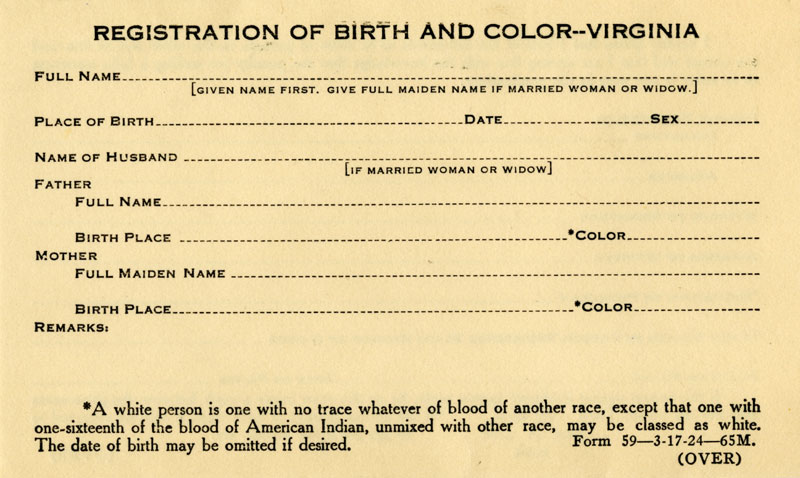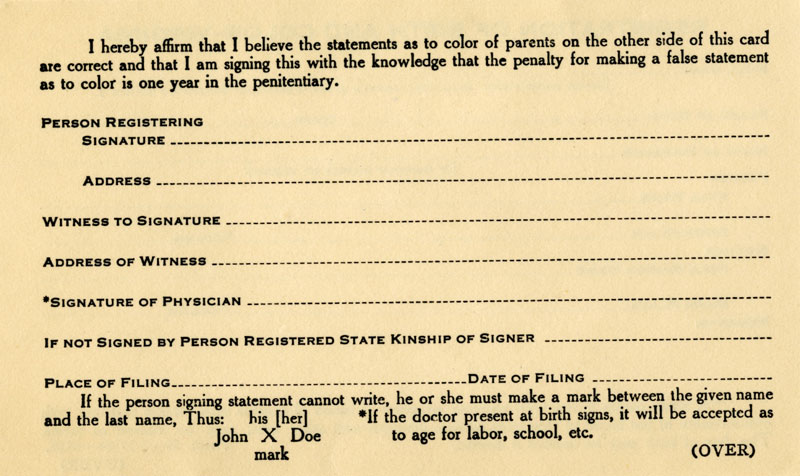Love with a Proper Stranger: What Anti-Miscegenation Laws Can Tell Us About the Meaning of Race, Sex, and MarriagePosted in Articles, Asian Diaspora, Law, Media Archive, Native Americans/First Nation, United States on 2011-08-06 22:03Z by Steven |
Hofstra Law Review
Volume 32, Issue 4 (2004)
pages 1663-1679
Rachel F. Moran, Michael J. Connell Distinguished Professor of Law
University of California, Los Angeles
True love. Is it really necessary?
Tact and common sense tell us to pass over it in silence,
like a scandal in Life’s highest circles.
Perfectly good children are born without its help.
It couldn’t populate the planet in a million years,
it comes along so rarely.
If true love is for the lucky few, then for the rest of us there is the far more mundane institution of marriage. Traditionally, love has sat in an uneasy relationship to marriage, and only in the last century has romantic love emerged as the primary, if not exclusive, justification for a wedding in the United States. In part, the triumph of love reflects a society increasingly committed to an ethic of individualism, including individualism of the romantic variety, so that marriage is no longer presumptively a tool for the State to advance the general welfare. In the quest for individual liberation, women have gained access to education and employment that increasingly emancipates them from dependency on a husband to achieve economic security.
Because marriage has grown to be a matter of personal choice, the number of restrictions on permissible partners has steadily declined. Even so, some official regulation persists, and we can learn as much about the meaning of matrimony by looking at who is excluded as by looking at who is eligible. To that end, I want to explore the lessons of anti-miscegenation laws, state statutes that once prohibited interracial marriage. At one time, these statutes were widespread, but they were not identical in their coverage. The laws universally targeted relationships between Blacks and Whites, and a number of the provisions, particularly those in Western states, banned unions between Asians and Whites. A few restricted intermarriage with Native Americans, but none mentioned Latinos. The laws had a remarkable longevity. Even though individuals enjoyed increasing freedom to choose a mate free of state and community interference, these statutes remained valid until 1967 when the United States Supreme Court struck them down as unconstitutional in Loving v. Virginia.
Although anti-miscegenation laws generally have been analyzed as racial legislation, they also can tell us a great deal about intimacy. These provisions have certainly been used to define and entrench racial difference, but they are also a means to set the boundaries of sexual decency and marital propriety. Here, I will use the comparative experience of Blacks, Asians, Native Americans, and Latinos to illustrate some of the laws’ implications for race and identity. I will then place the statutes in the context of larger developments regarding the regulation of sex and marriage to show how they reflected anxieties about wayward lust and forbidden desire.
I. THE ROLE OF ANTI-MISCEGENATION LAWS IN RACIAL SEPARATION AND STRATIFICATION
In the American mythology of racial segregation, there is an assumption that racial groups have always lived separately and that there is an almost natural inevitability about this arrangement. In fact, in the earliest years of settling the American colonies, Black slaves often worked side by side with White indentured servants. In these close, cooperative arrangements, interracial attraction was by no means a rarity. Relationships across the color line complicated social boundaries between Black and White, slave and free. Whites who, at least as a formal matter, had freely chosen a temporary contract of hard labor did not seem so very different from Blacks who had been sold into prevented race-mixing that undermined both the sanctity of free White labor and the legitimacy of Blacks’ status as property.
As the institution of slavery was consolidated, anti-miscegenation laws assumed another valuable purpose. They defined a racial hierarchy in which Whites were free and Blacks were not. Although many statutes banned both interracial marriage and fornication, White male slaveholders regularly flouted the laws. They could demand sex from their Black female slaves and inflict terrible punishment, including rape and sale on the auction block, if the women resisted. A former Virginia slave remembers the fate of another slave woman named Sukie:
“Ole Marsa was always tryin’ to make Sukie his gal.” One day when she was making lye soap and he approached her, “she gave him a shove an’ push his hindparts down in de hot pot o’ Soap. Soap was near to bilin’, an’ it burn him near to death. . . Marsa never did bother slave gals no mo’.” But a few days later Sukie was sent to the auction block.
In fact, interracial sex was so common that a new dilemma arose: How should the mixed-race offspring be identified? Traditionally, a child’s status was based on the father’s heritage, but a patrilineal rule would mean that most children of Black and White origin would be White and free. Such a result would once again complicate the line between Black and White, slave and free, as masters who enjoyed their license with female slaves produced emancipated mulattoes, not subject to the control of White owners and potentially loyal to Black mothers still in bondage. The solution was to change the rule of descendible privilege. Instead of determining a child’s status based on the father’s identity, a matrilineal principle of identity would be applied. Moreover, a one-drop rule evolved to ensure that even remote African ancestry identified a child as Black, not White. The children of sex across the color line would be Black and nearly always slaves. They could be emancipated only if their White father and master chose to do so, and they could never escape their Blackness…
…While anti-miscegenation laws were used to define racial difference and create racial hierarchy between Blacks and Whites in colonial America and later the antebellum South, the statutes served a distinct function when applied to Asian immigrants who arrived on the West Coast, particularly California, in the mid- to late 1800s. The Chinese were the first to arrive in substantial numbers in the middle of the nineteenth century when gold was discovered. Under the immigration laws, the Chinese were treated as sojourners, laborers who came temporarily to work and then returned to their home country. This migrant labor force was overwhelmingly male. In 1852, only seven of 11,794 Chinese were female. By 1870, Chinese men outnumbered Chinese women by a margin of 14 to 1.8 Because the men were here to sweat but not to stay, the United States government made clear that as unassimilable, non-White foreigners, they were ineligible for citizenship. Federal officials discouraged immigration of Chinese women because they did not want the sojourners to put down roots, form families, and produce children who would be Americans by birth….
…In contrast to Blacks and Asians, anti-miscegenation laws were seldom applied to Native Americans and never mentioned Latinos. The reasons for the lenient treatment of Latinos and Native Americans are quite similar. In both cases, these groups first came into contact with Whites when frontiers were being settled. At the outset, Whites had much to gain by forming friendly alliances with Indian tribes or Mexican natives. On occasion, these alliances could be cemented through intermarriage. Consider, for example, the Anglo settlers who arrived in northern Mexico to make their fortunes in the early to mid-1800s. Mexico, newly freed from Spanish rule, hoped to capitalize on the sparsely populated furthermost reaches of its territory by attracting foreign investors. However, Mexican officials did not want Anglos simply to come to their country, exploit the land, and leave with their fortunes. Instead, the government wanted to encourage permanent settlement, and an excellent way to do this was to reward those who put down roots there. As a result, Mexico offered naturalization opportunities and corresponding trade advantages to Anglos who married Mexican women. Indeed, the expectation was that Anglo settlers would be loyal to Mexican wives, not manipulate or abandon them after using them to personal advantage. In a diary of his Western travels, Matt Field, a journalist for the New Orleans Picayune, made these expectations clear to his readers when he described the sad tale of Maria Romero, who fell in love with a charming but dissolute Anglo adventurer who deserted her and her child by him. As Field wrote, “when subsequently she heard that [her lover] had designedly abandoned her, and had gone forever back to the United States, her reason failed, and poor Maria, the beauty of Taos, became a lunatic.” Maria had clearly expected marriage, not betrayal. In keeping with the commitment to permanent settlement in Mexico, the children of mixed marriages often spoke Spanish, observed Mexican cultural traditions, and Hispanicized their non-Spanish surnames…
Read the entire article here.


